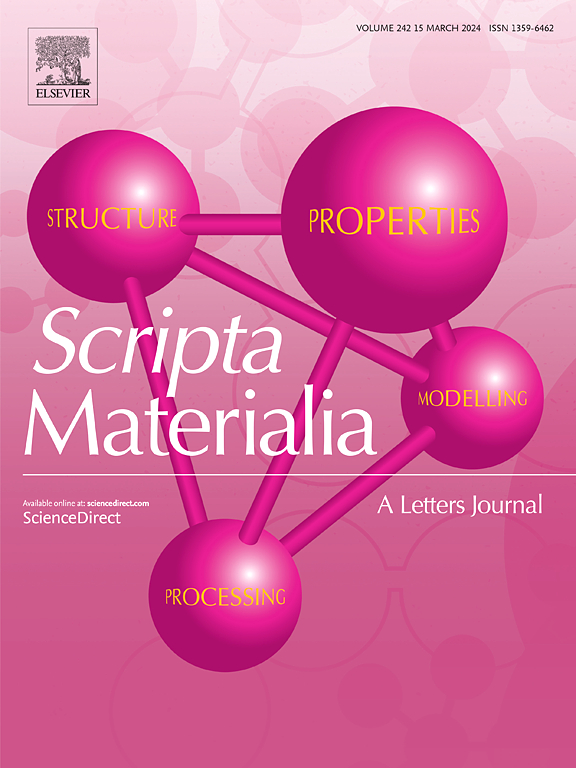基于CALPHAD和数据分析的奥氏体合金nsamel温度预测模型
IF 5.3
2区 材料科学
Q2 MATERIALS SCIENCE, MULTIDISCIPLINARY
引用次数: 0
摘要
在计算奥氏体合金的层错能(SFE)时,nsamel温度是一个重要但又经常被忽略的参数。提出了几个经验方程来估计奥氏体合金的nsamel温度,然后将其用于计算SFE和解释变形机制。然而,这些经验方程通常使用线性回归算法推导,往往过于简单化,可能无法捕捉影响nsamel温度的多种合金元素之间的复杂相互作用。此外,它们的适用性通常限于特定的成分范围。在这项研究中,我们提出了一种基于CALPHAD的方法,并建立了一个基于替代决策树的回归模型,该模型能够捕获多种合金元素之间的相互作用,以预测nsamel温度。CALPHAD方法和回归模型的预测与文献中报道的实验测量结果密切一致。本文还讨论了准确的nsamel温度预测对计算的SFE和变形机制的影响。本文章由计算机程序翻译,如有差异,请以英文原文为准。
Predictive modeling of Néel temperature in austenitic alloys using CALPHAD and data analytics
The Néel temperature is a crucial yet often overlooked parameter in calculating the stacking fault energy (SFE) of austenitic alloys. Several empirical equations have been proposed to estimate the Néel temperature of austenitic alloys, which are then used to calculate the SFE and explain deformation mechanisms. However, these empirical equations, typically derived using linear regression algorithms, are often simplistic and may fail to capture the complex interactions among multiple alloying elements that influence the Néel temperature. Moreover, their applicability is usually limited to specific compositional ranges. In this study, we propose a CALPHAD based approach and develop a surrogate decision tree based regression model capable of capturing the interactions among multiple alloying elements to predict the Néel temperature. Predictions from both the CALPHAD approach and the regression model show close agreement with experimental measurements reported in the literature. The implications of accurate Néel temperature predictions on the calculated SFE and deformation mechanisms are also discussed.
求助全文
通过发布文献求助,成功后即可免费获取论文全文。
去求助
来源期刊

Scripta Materialia
工程技术-材料科学:综合
CiteScore
11.40
自引率
5.00%
发文量
581
审稿时长
34 days
期刊介绍:
Scripta Materialia is a LETTERS journal of Acta Materialia, providing a forum for the rapid publication of short communications on the relationship between the structure and the properties of inorganic materials. The emphasis is on originality rather than incremental research. Short reports on the development of materials with novel or substantially improved properties are also welcomed. Emphasis is on either the functional or mechanical behavior of metals, ceramics and semiconductors at all length scales.
 求助内容:
求助内容: 应助结果提醒方式:
应助结果提醒方式:


